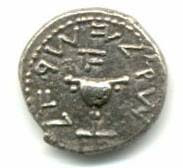So last night we hopped into Union Lake at about 9:30. No boats were to be seen and the viz was pretty decent. Quite a few fish were about including one hiding in a cooler inside one of the sunken boats. Surface water temps were in the high 50s and dropped as we descended, with a very marked thermocline separating the warm(ish) from the cold water layer.
We kicked out to the Model T and then followed the lines out to the north boat, ending up in 40 feet of water and then I did a valve drill for practice.
A valve drill involves maniplating each valve in sequence, showing that you can reach, shut down and reopen each valve on your doubles. The valve drill demonstrates that you can safely shut down a post that has failed thereby saving your breathing gas supply and that you can isolate one tank from the other, preventing an irreperable blow out of one tank from consuming all of your breathing gas.
The sequence goes: right post shutdown, switching to the backup reg that's on your left post and clip off primary regulator, right post opening, check primary regulator to ensure its on and unclip, isolation shutdown and opening, left post shutdown, switching to primary, left post opening. Check all valves, check pressure gauge and done.
Here's an example of how its done (with a slight variation from our technique described above, see if you can spot the difference):
Valve drills are good practice for valve manipulation, but not easy to do while keeping your buyancy and trim under control. Typically when you breathe your primary down after you shut down the right post, you don't have air left in your lungs so you drop a bit until you get the left regulator in your mouth and start breathing again.
In other words, I dropped quite a bit, then stabilized and got on with it.
Its also a pain doing it while using drysuit gloves and with a sore shoulder, but practice makes the drill go better.
We then headed back to the shore, did a slow ascent with stops and ended a good dive. Trim and buoyancy were much better than before and I'll keep working on it.
Wednesday, May 25, 2011
Dive 180 - Valve Drill
Subscribe to:
Post Comments (Atom)

No comments:
Post a Comment